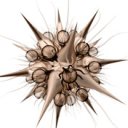Leaderboard
Popular Content
Showing content with the highest reputation on 05/20/2018 in all areas
-
NOTE: TOPIC HAS BEEN MERGED TO HERE: MapIt Quest Special thanks: AdmiralAlkex, Melba23, MrCrearoR, Dragon Warrior 3, SDL MapIt is a tile world editor. MapIt was built around the concept of reversing Dragon Warrior map images. MapIt can take image input and produce a tile and world array. Changing and replacing tile / world data is easy. B/c tile world editor. CTRL+R in image above to signal replace tile action and I use "G" to Get the tile under mouse. A full list of hotkeys can be assigned in the: Help Menu\Hotkeys MapParser is a C++ project that scans images for unique tiles. MapIt can be downloaded without MapParser. MapParser can be toggled off in the Scan_Image dialog. Without MapParser, MapIt will use the Scan_Tiles() function written in AutoIt ; which is 100 * slower Idk. If MapParser.exe will not run for you: Installing Visual C++ Redistributable for Visual Studio 2015 should fix it: https://www.microsoft.com/en-us/download/details.aspx?id=48145 You can start with example world and tiles. Example world was made following these steps: Started with a tile map image of DragonWarrior3 town of: Reeve From MapIt World Menu \ New \ Scan_Image dialog, I set the area to exclude the key legend to the far right of image. After scanning the map image to world and tile array. I removed a few of the map artifacts. More work could be done on this world; removing unwanted tiles, but it is fine for now. I saved my world to disk. This creates folder: Worldname: Containing folder of Tiles and a Worldname.txt. Using The Gimp, I edited some tiles to have a transparent color: Stairs, Trees, Desk Tables, Chest-of-drawers, Chairs, Signs, Doors, Beds. I changed the world layers to 2: World Menu \ Properties. F9 Finds all selected tile on current layer and changes to a new selected tile on new layer. I used F9 to change all Trees on layer: 0 to Trees on layer: 1. Then I used F9 to change all Trees on layer: 0 to Grass on layer: 0 In this video you can see how I used the Tile Menu \ Replace From Disk option to remap tile images to my custom tiles. Conveniently my tiles already have a transparent pixel. See video for how that was done: To use the example world: First unzip the world save file: http://songersoft.com/programming/mapit/worlds/Reeve_Swapped.zip From the World Menu: choose \Load Navigate to the Reeve_Swapped.txt located in the extracted zip. Or you can scan any image. The map images I used are here: http://www.realmofdarkness.net/dq/games/nes/dw3/maps/world For download, videos, and example of created world file data; please visit the MapIt webpage: http://songersoft.com/programming/mapit/mapit_about.phtml3 points
-
Great program @Xandy, would certainly be useful for those who want to do some tile extraction from games @TheSaint has stolen words out of my mouth1 point
-
Brilliant Xandy, just brilliant. @TheDcoder and I, have had the privilege to share part of the journey with you as you have been developing this (discussions in HexChat and many youtube clips and code examples), and to say we are impressed, as I am sure Dcoder will agree with me, would be a huge understatement. We haven't been able to contribute much, other than enthusiasm and encouragement, but it has been a joy to see you conquer things etc and progress. You are one very dedicated and talented man/coder.1 point
-
please also add more detail. I was rereading the thread and see we miss a lot of additional information that could be helpfull Step 1 is to understand your HTML DOM page hierarchy Do right mouse-context menu and choose inspect element. Attach screenshot as it will give directly an indication of your html hierarchy Teach yourself the IE 11 Developer tools (I assume you are on IE) with console tab to reveal more structure of your HTML page Try (and understand) things like below in IE 11 developer tools console tab: console.log(window.frames.length) cd(window.frames[2]) console.log(window.document.body.innerHTML) console.log(window.document.activeElement.innerText) console.log(window.document.activeElement.parentElement.parentElement.parentElement.innerHTML) cd(window.frames[0]) console.log(window.frames[2].document.activeElement.innerText) check FAQ 31 and install simplespy of iuiautomation thread. Post output of spy in this thread It will in general tell me the full hierarchy of your element but at least it will tell things on the frames1 point
-
Also consider using _SQLite_Exec (-1, "COMMIT;")1 point
-
You must use the handle of the previously opened database _SQLite_Exec($sConnDB, 'CREATE TABLE Animal ("Name", "Age");') ;etc Edit ... or much simpler, use "-1"1 point
-
Xandy, The UDF registers the WM_HSCROLL message - which is also used by the slider. So it looks as if the message is being eaten by the UDF handler and so AutoIt never sees your slider. If you prevent horizontal scrolling by using this line: _GUIScrollbars_Generate($hGUI_Pic, 0, 8000) the slider does work - which would confirm the diagnosis. I wrote the UDF as a help to real beginners and did not do my usual trick of having separate message handler(s). I will look at how I might do something to remedy that. Thanks for the report. M23 Edit: As I suspected it looked as if the way I had coded the handler meant that it was eating the message if it was not from the scrollbars rather than passing it on to be processed by AutoIt. Try using this Beta version and see if it works for you in your full script. I can certainly use both slider and scrollbar in the code you posted:1 point
-
Assuming that the "Parsed.txt" provided in post #3 is the exact result (if not I'm totally wrong ), this could be a funny way #Include <Array.au3> Local $s = FileRead("Parsed.txt") $s = StringRegExpReplace($s, '(?<=Nominal\h)\R(?=Diameter)', "") $s = StringRegExpReplace($s, '(?<!\h)\R(?!\s*$)', "=") $s = StringRegExpReplace($s, '(?m)^([^=\v]+)\h$', "$1=") ;Msgbox(0,"", $s) Local $temp_ini = @tempdir & "\crazytest.ini" FileWrite($temp_ini, "[test]" & @crlf & $s) $a = IniReadSection($temp_ini, "test") FileDelete($temp_ini) _ArrayDisplay($a) Edit BTW , For this, you can replace the EOL sequence (@crlf or so) between these two words by nothing $string = "part one " & @crlf & "part two " & @crlf & "part " & @crlf & "three " & @crlf & "part four " Msgbox(0,"", $string) $string = StringRegExpReplace($string, '(?<=part)\h*\R(?=three)', " ") Msgbox(0,"", $string)1 point
-
How to get Index of selected TreeView item?
behdadsoft reacted to AndrewDaoust for a topic
Here is a super simple way to get item information in a treeview. Just use "GUIOnEventMode" #include <GUIConstants.au3> #include <WindowsConstants.au3> #include <GUITreeview.au3> Opt("GUIOnEventMode", 1) Global $aItems[16] $hGUI = GUICreate("Treeview Example", 220, 320) $hTreeView = GUICtrlCreateTreeView(10, 10, 200, 300) GUISetState() GUISetOnEvent($GUI_EVENT_CLOSE, "_Close") $tParent = GUICtrlCreateTreeViewItem("Parent", $hTreeView) GUICtrlSetOnEvent($hTreeView, "_Get_Info") For $i = 1 To 15 $aItems[$i] = GUICtrlCreateTreeViewItem("Item " & $i, $tParent) GUICtrlSetOnEvent($aItems[$i], "_Get_Info") Next _GUICtrlTreeView_Expand($hTreeView) While 1 Wend Func _Get_Info() Local $ID = GUICtrlRead($hTreeView) Local $Handle = _GUICtrlTreeView_GetItemHandle($hTreeView, $ID) Local $Text = _GUICtrlTreeView_GetText($hTreeView, $Handle) Msgbox(0, "Treeview Example", "ID = " & $ID & @CRLF & "Handle = " & $Handle & @CRLF & "Text = " & $Text & @CRLF) EndFunc Func _Close() Exit EndFUnc Treeview_Example.au31 point -
C:WindowsSystem32DisplaySwitch.exe DisplaySwitch.exe /internal - Switch to Primary only DisplaySwitch.exe /external - Switch to Secondary only DisplaySwitch.exe /clone - Clone desktop on both screens (Not HDCP compliant!) DisplaySwitch.exe /extend - Extend desktop to both screens1 point
-
create a GUI with out the system menu
Earthshine reacted to nacerbaaziz for a topic
hi again I searched and did not find what I wanted Apparently I did not know what to write in the search box Please help me0 points









